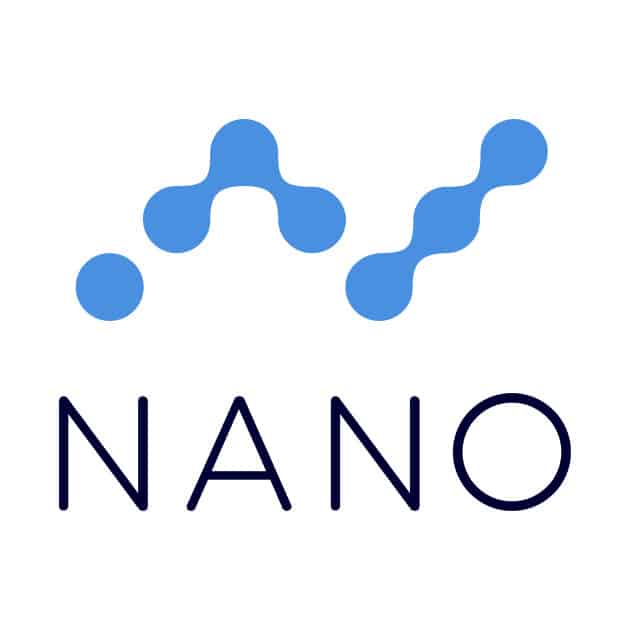Nano Explained
Last Updated: 1st November 2018
Raiblocks has now officially been re-branded to Nano
A problem currently facing popular blockchains such as Bitcoin is the issue of scalability. The architecture of blockchain is such that, each block on the blockchain, can only store a limited amount of data, in the case of Bitcoin, its block size is limited to 1MB. However, with rising demand, this has led to user’s facing higher transaction times and fees. Nano proposes a novel design architecture that offers instantaneous transaction times and unlimited scalability.
Block-lattice Architecture
Nano utilizes a novel DAG (Directed Acyclic Graph) based block-lattice architecture, where each user possesses their own blockchain. Instead of a user’s blockchain tracking transaction amounts, it instead will record account balances, a method that allows for less intensive storage requirements through the use of database pruning. Each blockchain will also reflect information related to the individual’s balance history, and can only be updated by the owner.
An important feature of the lattice architecture is that a user’s blockchain can be updated asynchronously to the rest of the block-lattice. Because each user has complete control over their own blockchain, distributed agreement protocols such as proof-of-work (PoW) or proof-of-stake (PoS), to decide on the shared global state of the ledger, is not needed.
The Bitcoin blockchain requires that global consensus, as to the shared state of the ledger, be achieved, in order for transactions to be processed, and that those transactions be added to the blockchain by PoW. The downside to this architecture is that it prolongs the speed at which transactions can be processed. With Nano, transactions are processed on a user’s individual blockchain, that operates asynchronously to every other blockchain. This transforms a shared datastructure i.e. a shared global ledger that can be found in Bitcoin, into a set of non-shared asynchronous ledgers on the block-lattice architecture, which allows for faster transaction times.
Send & Receive
Transferring funds on the Nano protocol produces two separate transactions. Firstly, a send transaction that deducts the fund amount from the sender’s balance, and secondly, a receive transaction that adds the fund amount to the receiving account’s balance. Each send transaction must reference the owner’s previous block, so a double-spend on the block-lattice, would be someone attempting to reference the same previous block in two separate send transactions. In the event of conflicting transactions, nodes will vote for the transaction that will be kept on the network, whilst the other transaction will be rejected. Furthermore, because Nano does not require mining for transactions to be processed, there are no transaction fees on the network. Nano’s send/receive transaction methodology yields certain advantages for the Nano protocol, such as keeping transaction sizes and data footprints small, which again allows for a block-lattice that is not storage intensive.
Delegated Proof-of-stake & Proof-of-work
Nano secures its ledger through the use of delegated proof of stake (dPoS). With dPoS, users have the ability to choose a representative node to vote on their behalf, acting as a voting proxy. A representative node fulfills tasks such as verifying signatures for blocks that are processed, and in the event of conflicting transactions, voting for the valid transaction. The voting process is balance-weighted, meaning that the weight of a representative’s vote is directly proportional to the amount of Nano that have been linked to it. The greater the number of Nano linked to a representative, the more its vote will be worth. A current list of all Nano representatives can be found here.
It is also interesting to note that Nano’s architecture does utilize PoW. However, PoW is used as an anti-spam measure, and NOT as an agreement protocol as to the shared state of the global ledger. Because there are no transaction fees on the Nano's lattice, an attacker could indefinitely spam the network. With Nano’s PoW implementation, each block has a small amount of work associated with it, approximately about 5 seconds to generate, and 1 microsecond to validate. This forces a malicious actor to dedicate a significant amount of computing power to carry out an attack, whilst requiring only a small amount of computing power by everyone else. Furthermore, it is also even possible for these spam transactions to be pruned away, limiting the amount of storage that can be consumed from this type of attack.
The Future of Nano
There is a continuous stream of innovation that is constantly occurring in the cryptocurrency and blockchain space, and Nano may prove to be the most important one yet. Its novel block-lattice architecture has enabled Nano to build a decentralized ecosystem of truly instantaneous and feeless transactions.
The current trajectory of the Nano project has so far been remarkable, and perhaps, is a foreshadowing of what the project can become in this growing space.


